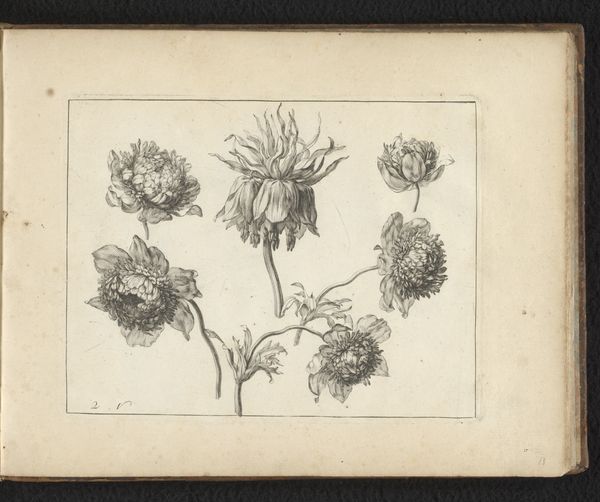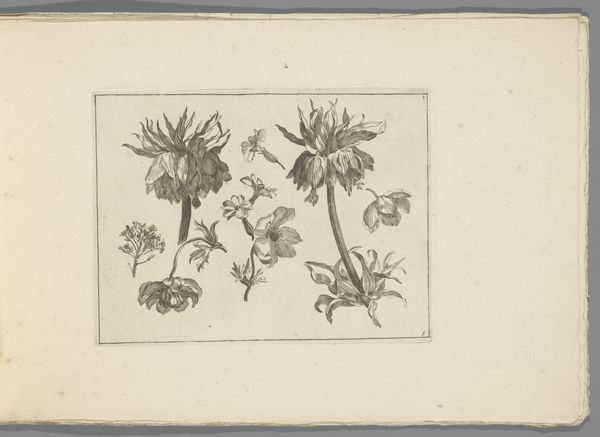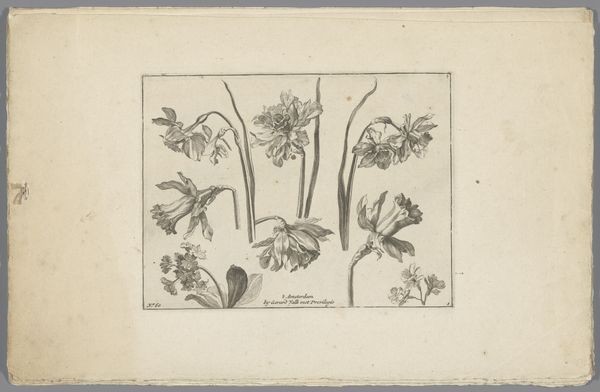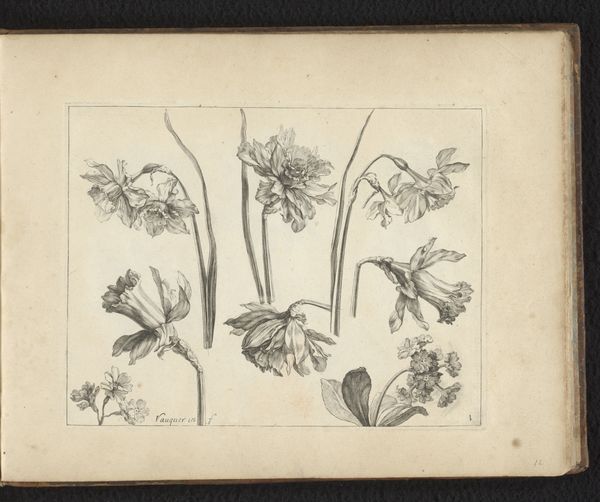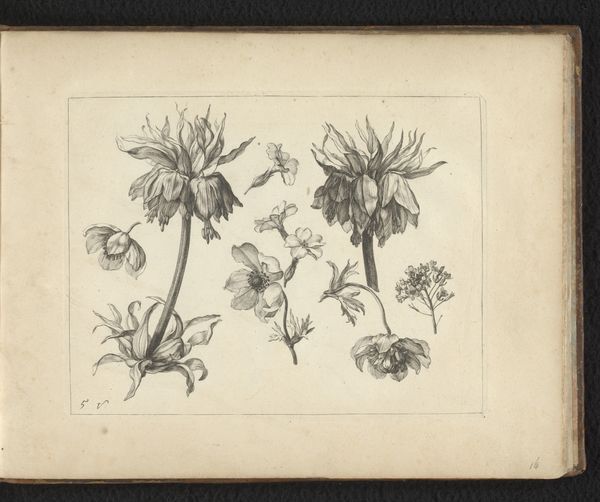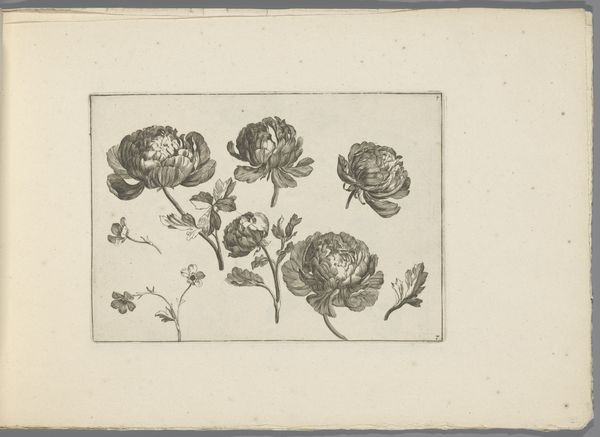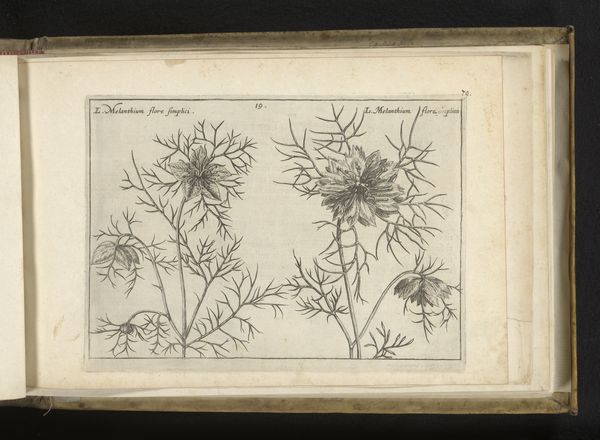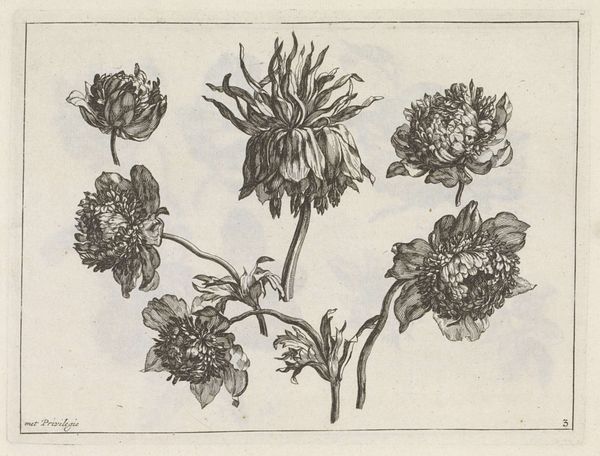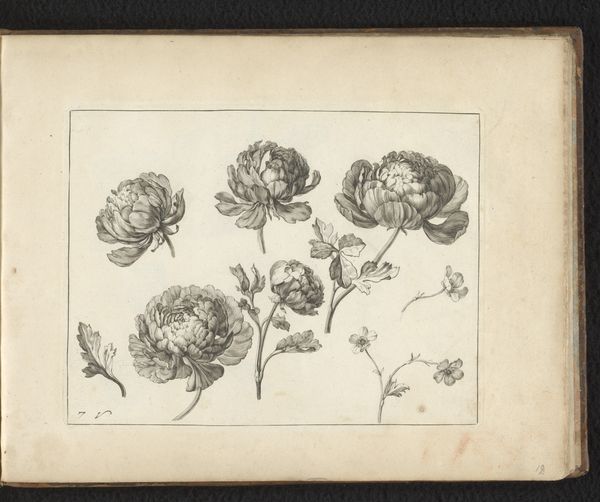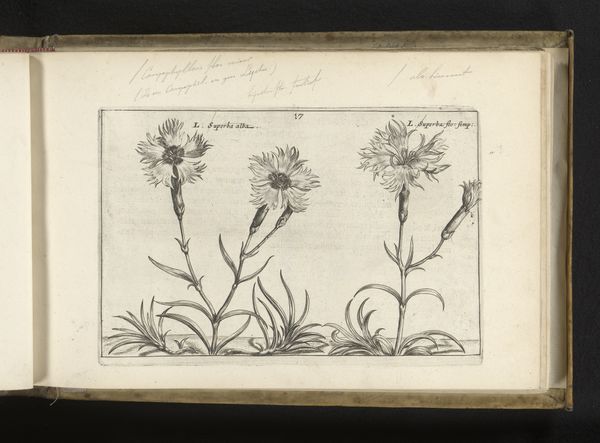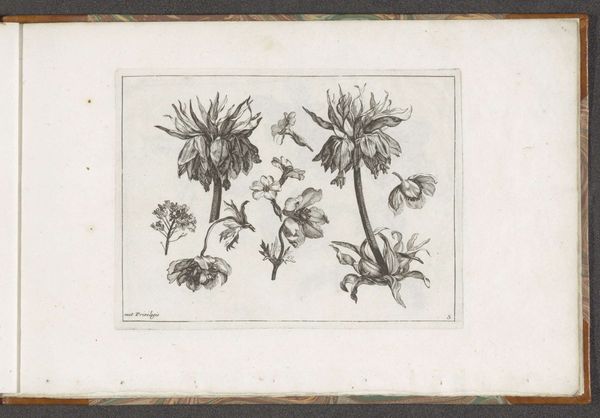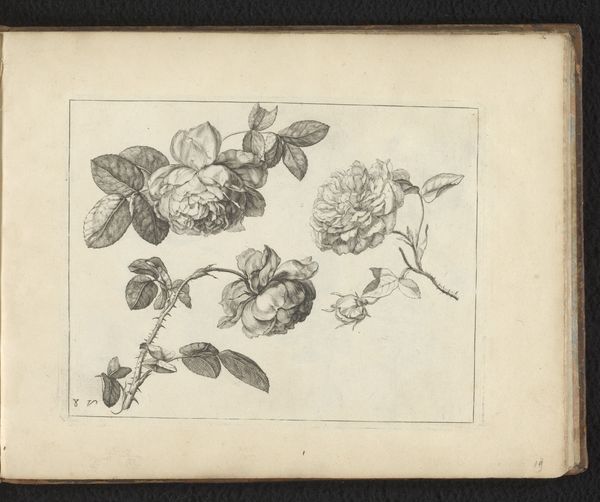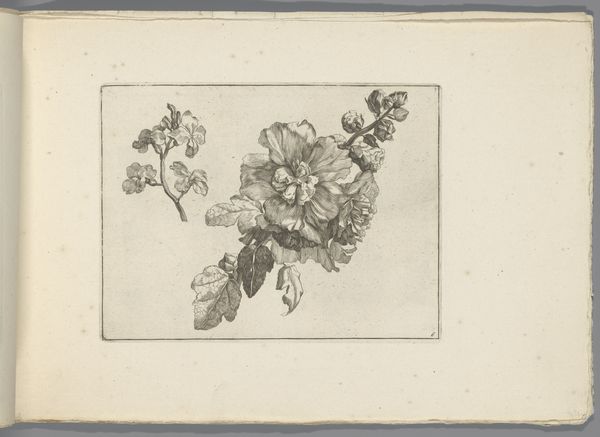
drawing, paper, ink
#
drawing
#
baroque
#
dutch-golden-age
#
paper
#
ink
#
plant
Dimensions: height 136 mm, width 178 mm
Copyright: Rijks Museum: Open Domain
Editor: Here we have Gerard Valck's "Pioenrozen," made with ink on paper, sometime between 1670 and 1726. The detailed botanical drawing features several peony blooms in different stages. I'm struck by the starkness of the image; the contrast created by the ink emphasizes the delicate nature of the petals, yet also feels slightly melancholy. What do you see in this piece, especially considering its historical context? Curator: It's interesting that you mention melancholy. While on the surface, this is a study of botanical forms, it's impossible to ignore the cultural significance of flowers during the Dutch Golden Age. Flowers, and especially rare or exotic blooms like these peonies, were powerful symbols of wealth, status, and, importantly, the ephemeral nature of beauty and life. Think about the intense tulip mania, where bulbs became a speculative commodity. Editor: So, you're saying the drawing itself might be commenting on the economic and social anxieties of the time? Curator: Exactly. The meticulous detail and the use of ink, a medium associated with permanence, to depict something as fleeting as a flower creates a tension. Is Valck simply capturing the beauty, or is he subtly critiquing the societal obsession with material wealth and the illusion of control over nature? What message might this send to viewers in a society grappling with wealth disparity? Editor: That reframes my perception entirely. It’s not just a pretty flower drawing; it’s a commentary on the societal values of the era. It also makes me consider how marginalized groups might have been excluded from enjoying the types of material goods portrayed in such artwork. Curator: Precisely! And by considering these layers, we move beyond aesthetic appreciation to understand the artwork as a product of its time, actively engaging with the complex social and political landscape. Editor: I'll definitely remember that—looking at art with that expanded, critical perspective really makes history come alive. Thanks for the insight!
Comments
No comments
Be the first to comment and join the conversation on the ultimate creative platform.
